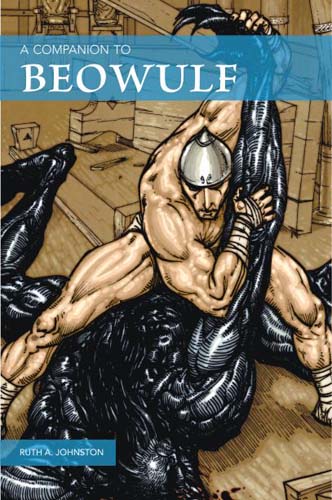There are three monsters in the Beowulf poem, but the only one with a name is Grendel. There is almost no description of Grendel in the story. We can surmise that he’s small enough to fit through the hall doorway, but big enough to pick up men easily. He seems to have a humanoid figure, such that his arm can be torn off, and his footprints can be followed. He has teeth and claws, and he can see and hear. That’s about all we’ve got.
Artists have made guesses at what Grendel may have looked like. I’m fond of the work of Gareth Hinds, who made a three-volume graphic novel for Beowulf. I used one of his images for the cover of my paperback.

Following our cultural stereotype of associating the color black with evil, contemporary American artists usually follow Hinds in making him tar-colored. John Gardner’s 1970 novel about Grendel used cover art not far from Hinds’ image.

The 2005 movie, “Beowulf and Grendel,” pushed the monster in a more humanoid direction.

Other artists have pushed his form in a more animal-like direction with fur or more reptilian with a lizard head. Others have given him bull’s horns as demons are often represented (perhaps based on ancient pagan gods with horns?).
If I were an artist and I wanted to draw Grendel, I think I would start by making him swampy, because it turns out that he and his mother live in a swamp. So he should be wet-looking with algae, but I’d also give him fur, probably ordinary brown or black fur like a bear. I would make him larger than he’s usually represented, at least twice the height of a man, maybe a bit more. The door at the King’s hall could have been twice the height of a man, just to be impressive, in which case Grendel could be even larger but able to stoop through.
Grendel has a mother, but he doesn’t live in any sort of colony or family. If he did, that would be a factor in his favor, for the worst creatures live and fight alone. We’ll get to his mother in time, but there’s even less description of her. The way monsters operated, she might not even look like him. In Norse mythology, anything might give birth to anything else.
